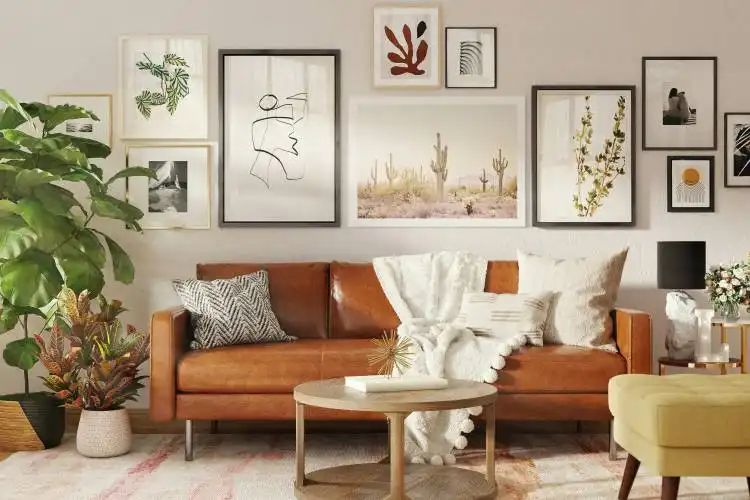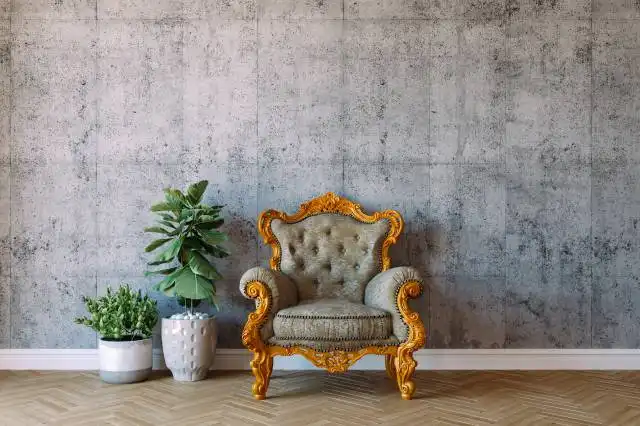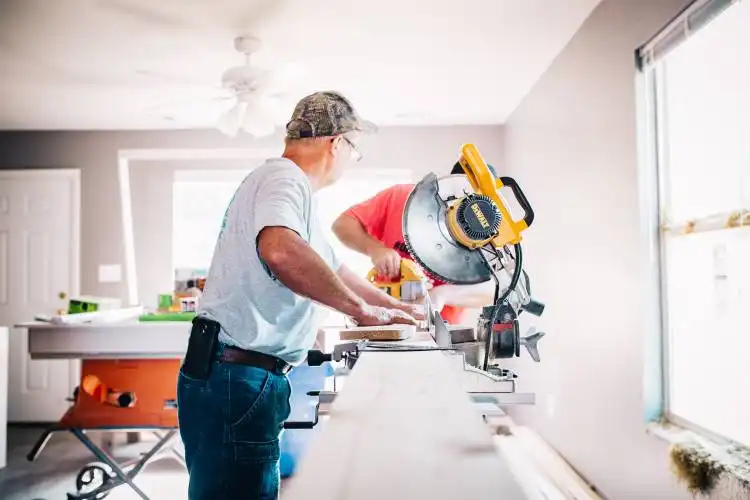Start a Virtual Interior Designer Business
Revolutionize Spaces right from Your Cozy Corner: The Art of Virtual Interior Design
| Updated


VIRTUAL INTERIOR DESIGNER BUSINESS
Are you ready to leave your creative mark on someone's habitat without even leaving your own? Consider immersing yourself in the exciting world of a Virtual Interior Designer business. This venture allows you to utilize digital tools to revamp, remodel, or totally revolutionize a client's living or working space, right from your own cozy corner. With your expertise and a click of a mouse, you can transform mundane chambers into magnificent chateaus, proving home is not just where the heart is, but where your art is too!
Jump to Business Plan
RELATED BUSINESS IDEAS
Browse ALL Home Improvement & Repair Solutions Business Ideas
Discover Your Perfect Domain
Unlock the door to your online success with our hand-picked selection of premium domain names. Whether you're starting a new venture or rebranding an existing one, the right domain can set the tone for your digital presence. Browse through our curated list, each with its unique potential to enhance your brand's visibility and credibility.
VIRTUAL INTERIOR DESIGNER MINI BUSINESS PLAN
This a quick reality check to help you identify the strengths and weaknesses of your business concept before you dive in.
Expected Percent Margin:
- Gross Margin: 70-80%
- Net Profit Margin: 30-50%
Earnings Expectations:
- Daily Earnings: $100 - $300
- Weekly Earnings: $700 - $2,100
- Monthly Earnings: $3,000 - $9,000
- Annual Earnings: $36,000 - $108,000
Actions to Hit Those Numbers:
Showcase Portfolio:
- Initial Setup: Create a stellar portfolio showcasing your skills and aesthetic.
- Update Regularly: Update periodically with fresh projects to keep clients intrigued.
Marketing and Customer Acquisition:
- Social Media: Active posting and engagement in design-oriented platforms (like Instagram, Pinterest). Post 3-4 times a week for organic exposure.
- Search Engine Optimization (SEO): Invest in SEO for your website to attract clients through search results.
Offering Packages:
- Pricing: Price your services competitively based on expertise, experience, and market rates.
- Package Variety: Offer different packages (room re-design, furniture selection, full house design) to cater to different needs and budgets.
Client Management:
- Efficiency: Use VR software to provide clients with clear, immersive designs.
- Meet Deadlines: Ensure projects are completed in a timely manner to keep clients happy and coming back.
Cost Control:
- Software: Opt for monthly subscriptions of design software instead of buying full licenses.
- Outsource: Outsource technical aspects like 3D modeling to reduce costs.
Business Operations:
- Client Volume: Aim to handle 8-12 clients per month (depending on the package).
- Upscaling: Consider training and hiring designers for scaling up when demand surges.
These are just estimations and can vary depending on your skill level, location, target customer base, and economic variables. Always consult with a financial advisor to get personalized advice.
NOT WHAT YOU HAD IN MIND? Here are more ideas



Browse ALL Home Improvement & Repair Solutions Business Ideas
Grab Your Business Website Name
Before you get caught up in the whirlwind of setting up your business, invest in a domain name. It's a small but significant step that lays the foundation for your brand and makes it easier for customers to find and trust you. Just like you wouldn't build a house without securing the land first, don't build a business without securing your domain name.
"Why? Can't that wait?" Here's why it shouldn't
Step 1: Determine if a Virtual Interior Design Business is Right for You
Breakdown of startup expenses
Before starting a virtual interior design business, it is important to understand the startup costs associated with the endeavor. This includes costs for software, equipment, and any other necessary materials. Additionally, it is important to consider the cost of marketing and advertising to help get the business off the ground. It is also important to consider the cost of any certifications or licenses that may be required to operate the business.
Breakdown of ongoing expenses
After understanding the startup costs associated with the business, it is important to understand the ongoing expenses. This includes costs for software, equipment, and any other necessary materials. Additionally, it is important to consider the cost of marketing and advertising to help keep the business running. It is also important to consider the cost of any certifications or licenses that may be required to operate the business.
Examples of ways to make money
There are several ways to make money as a virtual interior designer. One way is to offer services to clients such as space planning, color consultation, and furniture selection. Additionally, one could offer virtual design packages, which include a series of services such as a design plan, shopping list, and installation advice. Another way to make money is to offer online classes or workshops. Additionally, one could offer virtual consultations or design advice for a fee.
Step 2: Name Your Business
Tips on how to come up with a name
When coming up with a name for your virtual interior design business, it’s important to think of something that reflects the services you offer. Consider words that evoke a feeling of home and comfort, such as “cozy”, “home”, “interior”, “design”, “style”, etc. You can also consider a combination of words that reflect the type of design you specialize in, such as “modern”, “contemporary”, “rustic”, “traditional”, etc. Additionally, you can look to the names of other successful interior design businesses for inspiration.
Tips on how to check if the name is available
Once you have a few potential names in mind, it’s important to check if the name is available. Start by searching the name on the internet to see if it’s already taken. If it is, you’ll need to come up with a different name. Additionally, you should check with your local government to see if the name is available to register as a business. You can also check with the United States Patent and Trademark Office to see if the name is available to trademark. Doing this research upfront will save you time and money in the long run.
Step 3: Create a Business Plan
Overview of what should be included in a business plan
A business plan is an essential document for any business, and a virtual interior designer business is no exception. A business plan should include an executive summary, a market analysis, a description of the services offered, a financial plan, and a marketing plan. The executive summary should provide a brief overview of the business, the market analysis should provide an overview of the industry and the competition, the description of services should explain what services the business will offer, the financial plan should include a budget and financial projections, and the marketing plan should outline how the business will reach its target customers.
Tips on how to create a business plan
Creating a business plan can seem like a daunting task, but it doesn’t have to be. Start by researching the industry and the competition, and use that information to create an executive summary and market analysis. Then, create a description of services that outlines what services the business will offer. Next, create a financial plan that includes a budget and financial projections. Finally, create a marketing plan that outlines how the business will reach its target customers. Once the business plan is complete, it should be reviewed by a professional to ensure accuracy and completeness.
Step 4: Register Your Business
Overview of the Different Types of Business Structures
When registering your business, it is important to understand the different types of business structures available. The most common types of business structures are sole proprietorship, partnership, limited liability company (LLC), and corporation. A sole proprietorship is the simplest and most common type of business structure and is owned and operated by one individual. A partnership is a business owned by two or more individuals. A limited liability company is a hybrid of a corporation and a partnership, and offers the limited liability of a corporation with the pass-through taxation of a partnership. A corporation is a separate legal entity owned by shareholders and is the most complex type of business structure.
Tips on How to Register Your Business
Once you have determined the type of business structure that is right for your business, the next step is to register your business. Depending on the type of business structure you have chosen, the registration process will vary. For a sole proprietorship, you will need to register your business with your state and local government. For a partnership, you will need to register with your state and local government and also create a partnership agreement. For a limited liability company, you will need to register with your state, create an operating agreement, and obtain an employer identification number (EIN). For a corporation, you will need to register with your state, create corporate bylaws, obtain an EIN, and issue stock certificates.
Step 5: Obtain Licenses and Permits
Overview of the different licenses and permits needed
Before a virtual interior designer business can be opened, the business owner must obtain the necessary licenses and permits. Depending on the state and local regulations, the business may need to obtain a business license, a sales tax permit, and a zoning permit. In addition, the business may need to obtain a professional license if the state requires interior designers to be certified.
Tips on how to obtain the necessary licenses and permits
The best way to obtain the necessary licenses and permits is to contact the local government office. The local government office will be able to provide the business owner with the necessary paperwork and instructions on how to apply for the licenses and permits. Additionally, the business owner should research the local zoning laws to ensure that the business is compliant with the regulations. Furthermore, the business owner should research the professional licensing requirements to ensure that they are qualified to practice interior design. Finally, the business owner should contact their local Chamber of Commerce to learn more about the local regulations and to find out about any additional permits that may be required.
Step 6: Set Up Your Business Finances
Overview of the Different Types of Business Accounts
When setting up your business finances, it is important to understand the different types of business accounts that are available. The most common types of accounts are a business checking account, a business savings account, and a business credit card. A business checking account is used to manage day-to-day expenses, while a business savings account is used to save money for future expenses. A business credit card is used to make purchases and manage expenses. It is important to understand the differences between these accounts and how they can be used to manage your business finances.
Tips on How to Set Up Your Business Finances
Once you have decided on the type of accounts you need, it is important to set up your business finances correctly. First, you will need to open a business bank account. This can be done online or in person at a local bank. When opening the account, make sure to ask about any fees associated with the account and any other services that the bank may offer. Additionally, you will need to obtain a federal tax identification number (EIN) for your business. This number is used to track your business income and expenses. Finally, you will need to set up a system for tracking your business finances. This could include a spreadsheet or accounting software. This will help you keep track of your income and expenses and ensure that your business finances are in order.
Step 7: Market Your Business
Overview of different marketing strategies
When it comes to marketing your virtual interior design business, there are a variety of strategies you can use. Social media is a great way to reach potential customers, as it allows you to easily create a presence and share your work. You can also use email marketing to reach out to potential customers and keep them updated on your services. Additionally, you can use search engine optimization (SEO) to make sure your website is visible in search engine results. You can also use paid advertising, such as Google Ads, to get your business in front of potential customers. Finally, you can also use traditional marketing methods, such as print ads and radio spots.
Tips on how to market your business
When it comes to marketing your virtual interior design business, it’s important to be consistent. Make sure you are regularly posting on social media and sending out emails. Additionally, make sure your website is up to date and optimized for SEO. You should also consider using paid advertising to reach potential customers. Finally, make sure you are targeting the right audience with your marketing efforts. Research your target demographic and tailor your marketing efforts to them.
Step 8: Set Up Your Virtual Office
Overview of the different types of virtual office solutions
There are many different types of virtual office solutions available, depending on the size and scope of your business. Some of the most popular options include virtual office services, cloud-based services, and virtual office software. Virtual office services provide a physical address, mail forwarding, and other services, while cloud-based services provide access to a range of applications, such as productivity tools, customer relationship management (CRM) software, and more. Virtual office software is a great way to manage your business operations, such as scheduling, invoicing, and customer support.
Tips on how to set up your virtual office
When setting up your virtual office, it is important to consider the type of services you need and the cost associated with them. It is also important to consider the security measures you will need to protect your data. Additionally, you should consider the type of technology you will need to access your virtual office, such as a computer, laptop, or mobile device. Finally, you should also consider the type of support you will need to ensure your virtual office is running smoothly.
Step 9: Network and Build Your Client Base
Overview of Different Networking Strategies
The best way to build your virtual interior design business is to network with potential clients. There are a variety of ways to do this, such as joining online forums, attending industry events, and joining professional organizations. Additionally, you can use social media platforms to reach out to potential clients and showcase your work. You can also use word-of-mouth to spread the word about your business and build relationships with potential clients.
Tips on How to Build Your Client Base
Once you have established a network of potential clients, you can start building your client base. You can do this by offering discounts or free consultations to new clients. Additionally, you can create a portfolio of your work to showcase your skills and attract potential clients. You can also offer referral incentives to existing clients to encourage them to refer you to their friends and family. Finally, you can create a website and blog to showcase your work and provide potential clients with more information about your services.
EXPLORE MORE CATEGORIES
Browse ALL Business Idea Categories
TAKE THE NEXT STEPS










